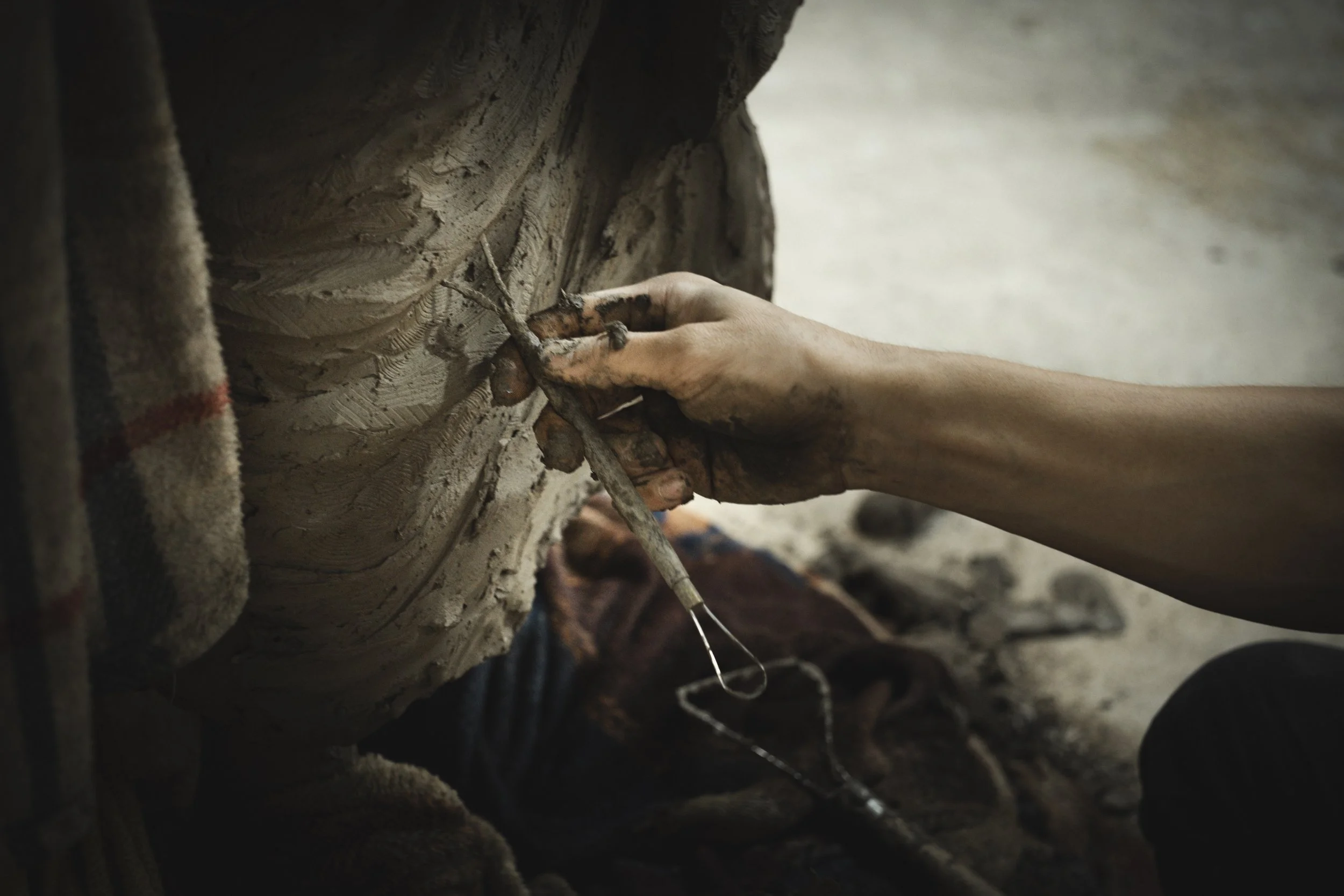Buddha Sculpture Workshop
We live in a world where everything comes wrapped in plastic or in a box, and that is what expectations for new has become. And whilst Mr. Ford made sure that factory production became the norm, I have an affinity for hand-crafted goods. Even in my hometown of Udon Thani there is a row of shopfronts selling Buddha sculptures, altars and everything one sees in a temple or home shrine. I feel the same about Buddhism as I do Church of England Protestantism, it is part of my heritage. In that sense, my view of Buddhism and Thai practises is rather unique and devoid of the usual sentimentality. Whilst many purchase these goods — every house, shop or even mall in Thailand has at least one shrine, and almost every sub-district has a temple — not often does one wonder where they actually come from, nor the care taken into creating effigies that are inherently loaded with cultural and spiritual importance.





Even as a Thai national, and speaking the language, access is not always easy. not because of push-back, Thai people are in general very open to anyone who takes interest. It’s because despite living here, I don’t live like a local. In my work I very rarely interact with anyone domestically, I’m not “in the loop”. I don’t read or write Thai very well, Facebook (the main bulletin board used in Thailand) is hard to navigate. When I go out of my way to make conversation with people, I am looked at as an outsider. Ironic, considering I was born here, have been here longer than most and have objectively seen more of the country than many. Unless I physically pass a place, and I do put in the miles, is extremely difficult — and would be impossible for an outsider. Worst of all, the things I am looking do document are so mundane to people that they would never think to recommend. Whereas the flashy tourist attractions could not be further from what I am truly searching for. I battle with the national view of new is good, and old is “why?” This workshop lies at the edge of town, not far from Dhammachedi Museum. The museum may bring in tourism, but itself is a public presentation of Wat Pha Ban Tat situated behind, that is closed to the public.





Until research began for Discover Temples of Thailand (and the Dehancer collaborative article in specific) not only was the workshop unknown to me, but the very question of “Where do Buddha’s come from?” was never thought to be asked. Clearly the various temples needed specific imagery commissioned, and clearly the storefronts and smaller temples needed a selection able to purchase. I have seen and photographed many larger monuments under construction on-site, but never thought of the true detail and process of creating the smaller effigies — outside of the odd glimpse of a statue wheeling down the highway on the bed of a Hilux. When I asked the sculptor how long an average clay sculpted Buddha takes, he replied: “This one I should get done in a month.” There was also a foundry where brass castings are made, with the deburring, etching and blueing process are all done by hand. I have asked the owner if I can photograph the casting process when it is done next. From the multitude of cast effigies waiting for processing — that may be a while yet.





The work that goes into creating these lifelike effigies is by no means anything short of incredible. I often see online people in Europe or even America protest “Why don’t we make statues like this anymore?” on photos of Michelangelo’s David or such, and the brutal truth is because the West won’t pay for it. Here in Thailand (and much of the East such as China and Japan) traditional artisanal crafts are still very much alive, if not forefront. Despite rapid modernisation here in the East, there is still respect for tradition. Temples, Buddha — that is how it is most commonly shown.
Images captured by David Roberts using a combination of Laowa Argus 33mm F0.95 APO and Dreamer 65mm F2.8 Super Macro APO
Thank you to Venus Optics for supporting DRobertsPhoto and providing Laowa APO optics for use during the foundational phase of Discover Temples of Thailand













